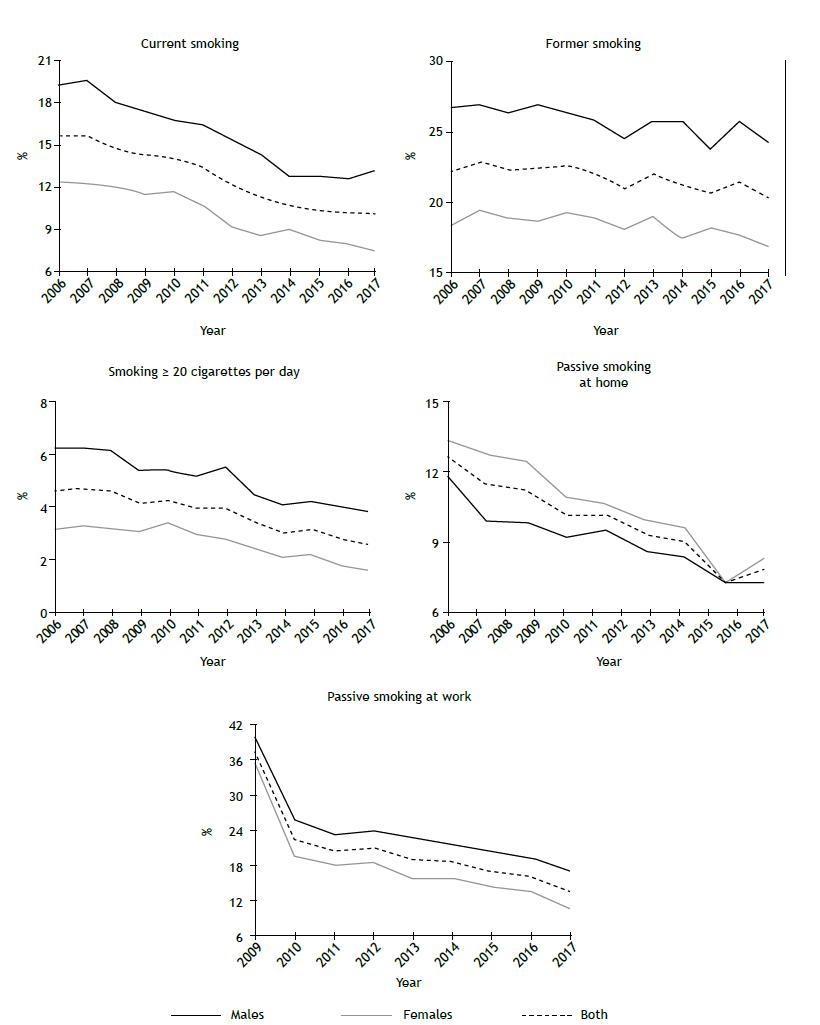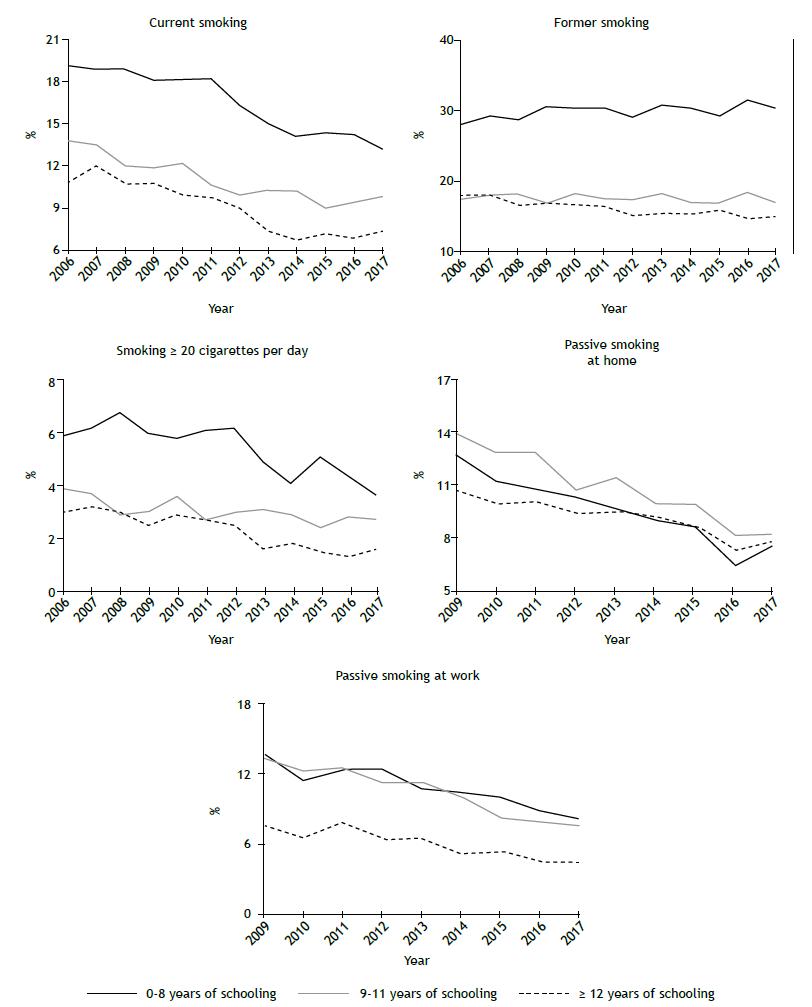ABSTRACT
Objective:
To evaluate the trends in smoking prevalence in all Brazilian capitals between 2006 and 2017.
Methods:
This was a study of temporal trends in smoking, based on information from the Telephone-based System for the Surveillance of Risk and Protective Factors for Chronic Diseases. The trends in smoking prevalence were stratified by gender, age, level of education, and capital of residence. We used linear regression analysis with a significance level of 5%.
Results:
From 2006 to 2017, the overall prevalence of smoking in the Brazilian capitals declined from 19.3% to 13.2% among men and from 12.4% to 7.5% among women (p < 0.05 for both). Despite the overall decline in the prevalence of smoking in all of the capitals, the rate of decline was lower in the more recent years. There was also a reduction in the prevalence of former smoking (22.2% in 2006 to 20.3% in 2017). In contrast, there was an upward trend in the prevalence of former smoking among individuals with a lower level of education (from 27.9% in 2006 to 30.0% in 2017). In 2017, the prevalence of smoking among men was highest in the cities of Curitiba, São Paulo, and Porto Alegre, whereas it was highest among women in the cities of Curitiba, São Paulo, and Florianópolis.
Conclusions:
There have been improvements in smoking prevalence in Brazil. Annual monitoring of smoking prevalence can assist in the battle against chronic noncommunicable diseases.
Keywords:
Smoking; Tobacco use disorder; Health surveys


